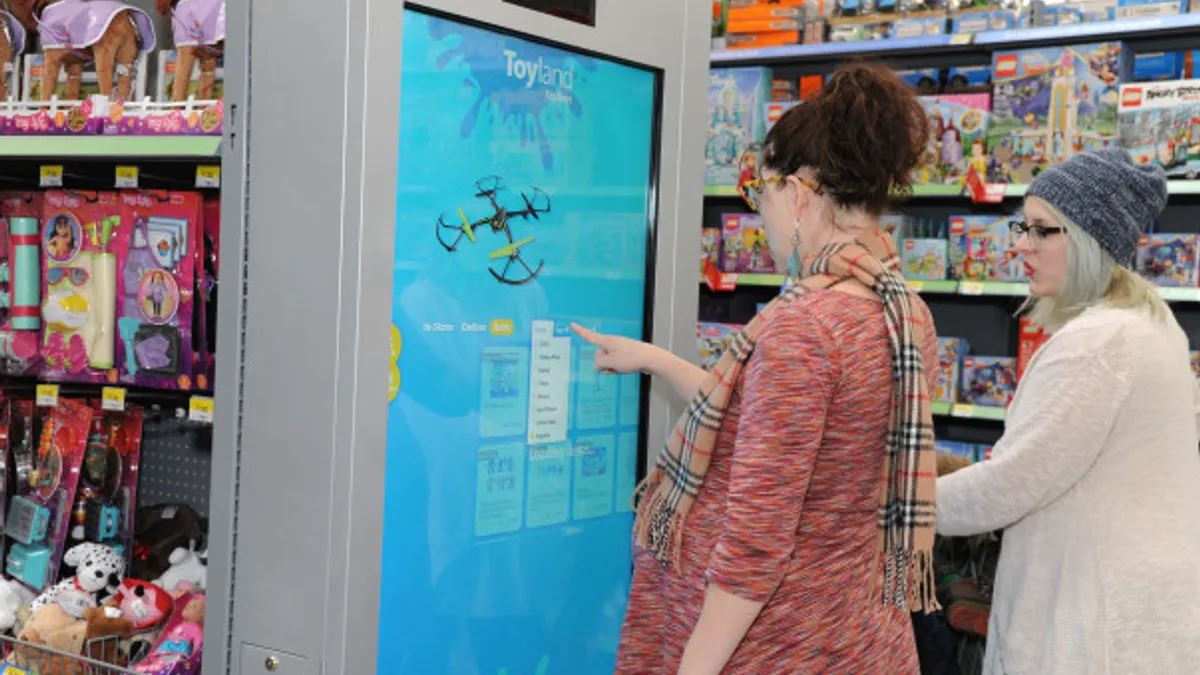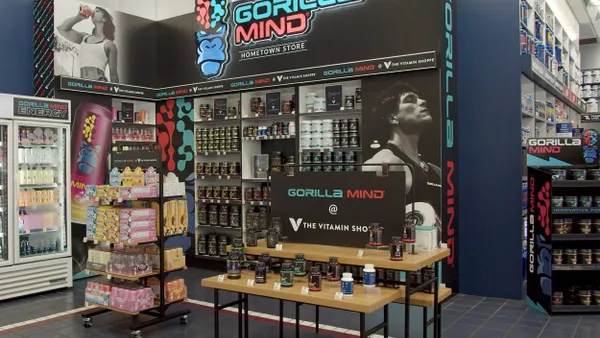Dive Brief:
-
Retail is among the top sectors driving the multi-touch screen market, which was valued at $6 billion in 2016 and is projected to reach $16 billion by 2023, according to a Research and Markets report.
-
Multi-touch screens are an improvement from single touch screen technology, according to the report. Unlike single touch screens, in which an operator can move, click or slide on a single point with a finger or one-touch stylus, multi-touch technologies can distinguish between numerous touch inputs and respond accordingly.
-
The consumer electronics and retail segments dominated the market share with around 60% in 2016, the report found.
Dive Insight:
Multi-touch screens — including the iPhone and iPad which recognizes multiple touch points — have been around for a while, but the technology continues to improve. And say what you will about the effects of too much screen time, but our world is one of increasing screens and screen usage for just about any application you can think of.
Retail is right up there in terms of leading the current and expected growth in this market. Earlier this year, Walmart began using touchscreens in some stores to enable product searches and other brick-and-mortar retailers have followed suit. An increasing number of retailers are also deploying mobile devices like iPads to enable online ordering in-store and easy access to inventory searches. Most recently, Arcadia Group announced a plan to incorporate such devices across all of its brand stores.
These applications may not involve the most up-to-date multi-touch screens, but as touchscreen devices become more commonplace, we can expect to see retailers upgrade their in-store devices as a matter of competitive differentiation. For example, one can easily imagine a home decor retailer employing a large touchscreen in-store that allows shoppers to use two hands and multiple fingers to pull furniture components into a virtual room and try out different arrangements.
For those who still use a smartphone or tablet touchscreen in a hunt-and-peck manner, maybe this seems like a far-off concept. But in roughly the last decade, using screens to touch, swipe and move objects has become part of our culture and as shoppers we will quickly come to expect more of it. We're not quite caught up to "Minority Report" yet, but we're getting there.












